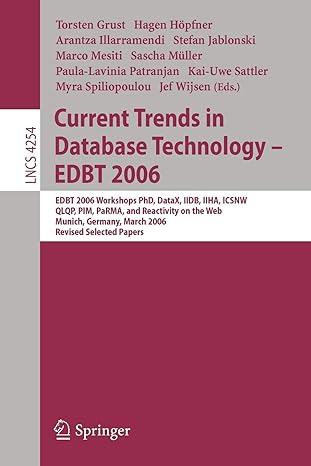Answered step by step
Verified Expert Solution
Question
1 Approved Answer
draw UML Activity Diagrams for these descriptions:Diagram 1 : Activity Tracking and Sharing Description This diagram illustrates the process by which users can review and
draw UML Activity Diagrams for these descriptions:Diagram : Activity Tracking and Sharing
Description
This diagram illustrates the process by which users can review and share their activity data on social networks. Users can track various metrics such as distance, time, speed, and other statistics. Once reviewed, this data can be shared with friends and followers.
Visual Elements
Start Node: Entry point of the activity.
Actions: Review Activity, Select Data to Share, Share on Social Network.
Decision Node: Determines if the user wants to share the data.
End Node: Marks the end of the activity.
Purpose
The purpose of this diagram is to detail the steps users take to review their activities and share them, ensuring they can engage with their social network seamlessly.
Diagram : Creating and Comparing Challenges
Description
This diagram represents the process of creating challenges and comparing times on designated routes. Users can create new challenges, participate in existing ones, and compare their times with others.
Visual Elements
Start Node: Entry point of the activity.
Actions: Create Challenge, Join Challenge, Record Time, Compare Times.
Decision Node: Determines if the user wants to create or join a challenge.
End Node: Marks the end of the activity.
Purpose
This diagram is aimed at illustrating how users can create new challenges, join them, and compare their performance with others to foster a competitive and motivating environment.
Diagram : Integrating Sports Devices
Description
This diagram shows the integration process of various sports devices such as sports watches, sensors and GPS devices. Users can sync these devices to track their activities more accurately.
Visual Elements
Start Node: Entry point of the activity.
Actions: Connect Device, Sync Data, Review Synced Data.
Decision Node: Checks if the device is compatible.
End Node: Marks the end of the activity.
Purpose
The purpose is to detail how users can integrate external sports devices with the system to enhance their activity tracking capabilities.
Diagram : Tracking and Recording Food Intake
Description
This diagram outlines the process for users to enter and track their food intake. It includes sections for different meals and various nutritional information.
Visual Elements
Start Node: Entry point of the activity.
Actions: Enter Food Data, Select Meal Type, Record Nutritional Information.
End Node: Marks the end of the activity.
Purpose
The purpose is to help users monitor their diet by logging detailed information about their food intake, which can be crucial for managing nutrition and overall health.
Diagram : Sleep Tracking
Description
This diagram represents the process of tracking sleep hours, including specifying the start and end times of sleep periods.
Visual Elements
Start Node: Entry point of the activity.
Actions: Enter Sleep Data, Specify Sleep Times, Review Sleep History.
End Node: Marks the end of the activity.
Purpose
The purpose is to allow users to log and review their sleep patterns, helping them to understand and improve their sleep habits.
Diagram : Entering and Tracking Body Measurements
Description
This diagram details how users can enter and monitor their body measurements, including specific instructions for accurate measurement.
Visual Elements
Start Node: Entry point of the activity.
Actions: Enter Measurements, View Instructions, Record Data.
End Node: Marks the end of the activity.
Purpose
The purpose is to assist users in accurately logging their body measurements, which is important for tracking physical changes and progress over time.
Diagram : Downloading Progress Information
Description
This diagram shows how users can download their progress information in various formats, selecting specific data and visualizations to include.
Visual Elements
Start Node: Entry point of the activity.
Actions: Select Data, Choose Format, Download File.
End Node: Marks the end of the activity.
Purpose
The purpose is to provide users with the ability to export their data for personal records or to share with healthcare professionals.
Diagram : Managing Health Status
Description
This diagram demonstrates how users can log their current health status, including specific conditions they might be experiencing.
Visual Elements
Start Node: Entry point of the activity.
Actions: Enter Health Status, Add Specific Conditions, Save Data.
End Node: Marks the end of the activity.
Purpose
The purpose is to enable users to monitor and record their health status, which can be critical for managing longterm health and wellness.
These diagrams and descriptions collectively outline how users can interact with the system to track their activities, health, and nutrition, as well as share and analyze their data effectively.
Step by Step Solution
There are 3 Steps involved in it
Step: 1

Get Instant Access to Expert-Tailored Solutions
See step-by-step solutions with expert insights and AI powered tools for academic success
Step: 2

Step: 3

Ace Your Homework with AI
Get the answers you need in no time with our AI-driven, step-by-step assistance
Get Started


